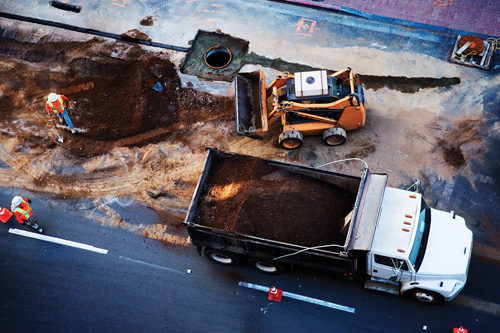Struck-by incidents in the construction industry: Know the risks

Construction sites are busy and full of potential dangers. One of these dangers is struck-by incidents. In 2013, more than 17,100 construction workers were injured – and 84 workers died – in struck-by incidents, according to the 2016 edition of the chartbook “Injury Facts,” produced by the National Safety Council.
The hazards
Construction workers are most often struck by heavy equipment and vehicles, falling or flying objects, and masonry or concrete walls under construction, OSHA states. To prevent these injuries, OSHA offers a number of tips, including:
- Always wear a seat belt when operating equipment.
- Drive slowly and follow all safe operating procedures.
- Don’t operate vehicles or equipment if you can’t see behind you while backing up. In these situations, make sure the vehicle or equipment has a reverse alarm that other workers can hear, as well as another worker to signal that all is clear before moving.
- Inspect all vehicles and equipment before work begins. Be sure brakes are in good condition, and chock all vehicle wheels when not in use or parked on an incline.
- Wear proper personal protective equipment, including high-visibility vests.
Falling or flying objects are another struck-by hazard found on construction sites. OSHA notes that workers are at risk from falling objects from beneath cranes, scaffolds or overhead work. To avoid injuries, wear personal protective equipment, employ protective measures such as toeboards and debris nets, secure all items when working at height, and never work underneath suspended loads.
To avoid being injured or killed by flying objects or when flying particle hazards are present, wear hard hats and appropriate eye and face protection; never use hand tools with loose or cracked handles; and make sure you’re trained on safe operation of power tools, OSHA states.
To stay safe when constructing concrete or masonry walls, the agency notes, workers should:
- Place loads on a concrete structure only after it has been deemed safe by a qualified person.
- Properly shore or brace structures until permanent support elements are in place.
- Allow in the work zone only employees who are actively engaged in construction of the walls.
- In the event of a lifting mechanism failure, use automatic holding devices to support forms.
For more information, read OSHA's "Struck-By" Hazards Trainer Guide.
Post a comment to this article
Safety+Health welcomes comments that promote respectful dialogue. Please stay on topic. Comments that contain personal attacks, profanity or abusive language – or those aggressively promoting products or services – will be removed. We reserve the right to determine which comments violate our comment policy. (Anonymous comments are welcome; merely skip the “name” field in the comment box. An email address is required but will not be included with your comment.)

